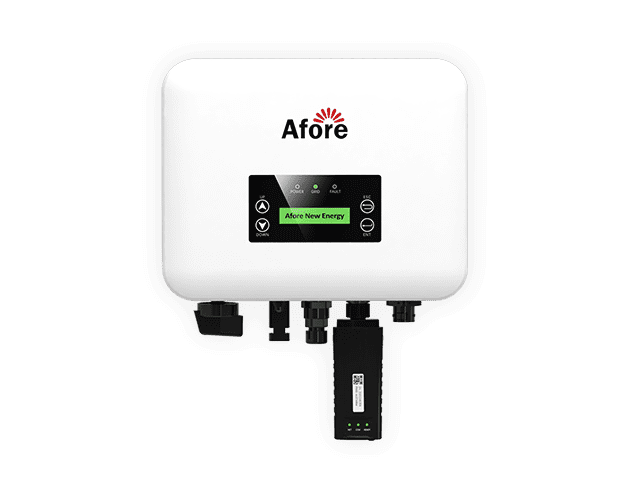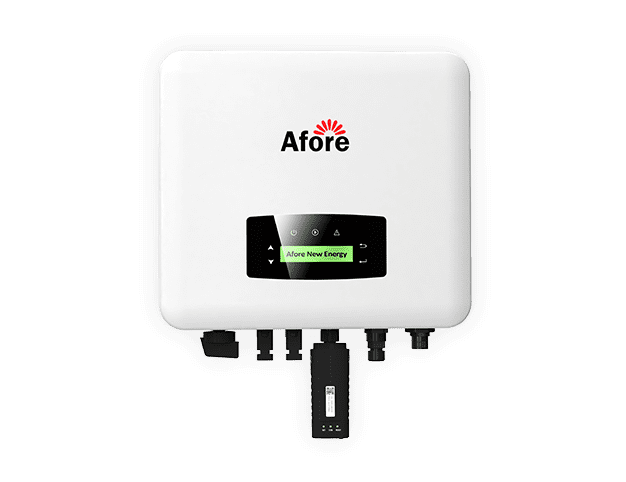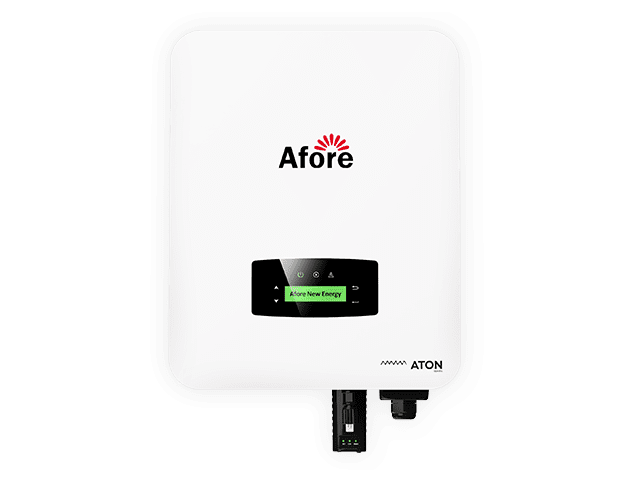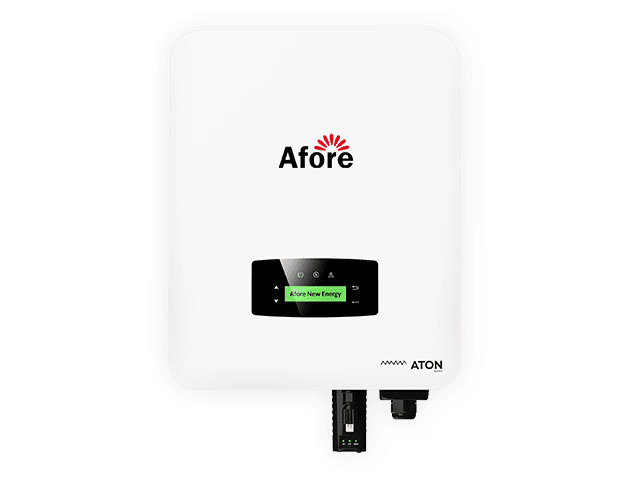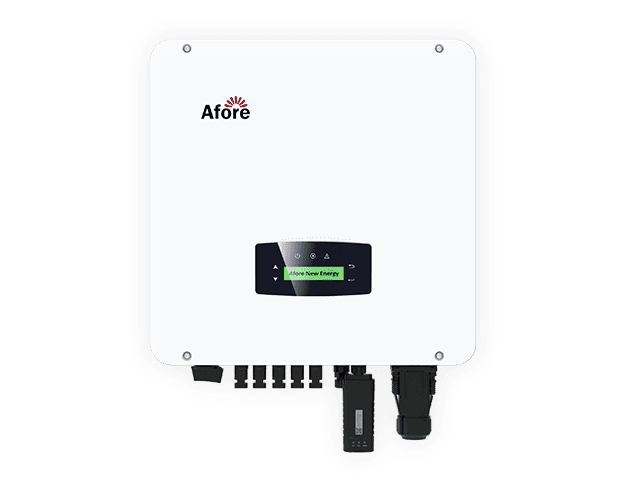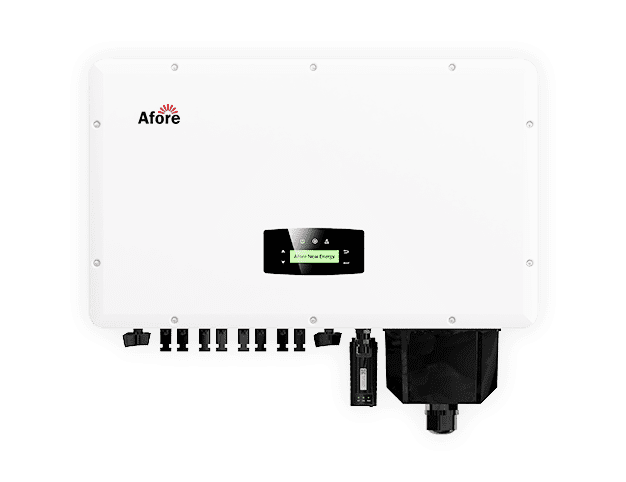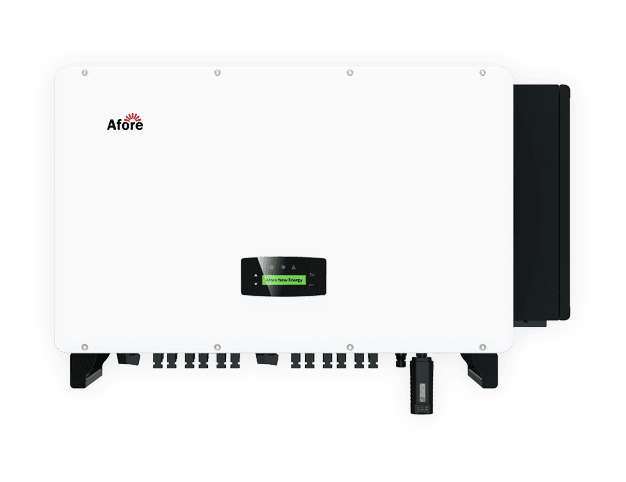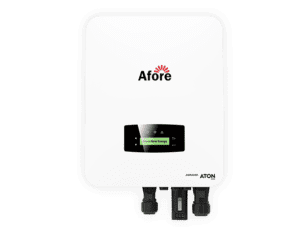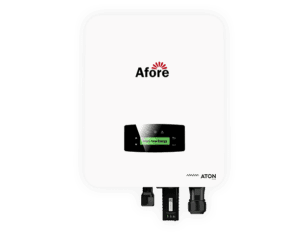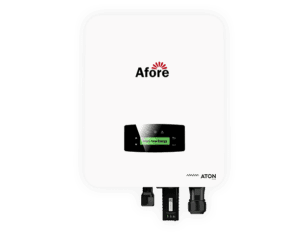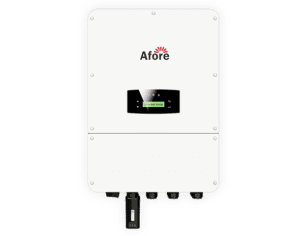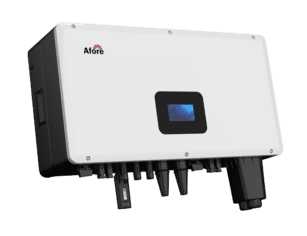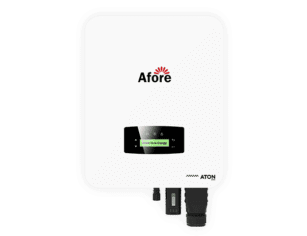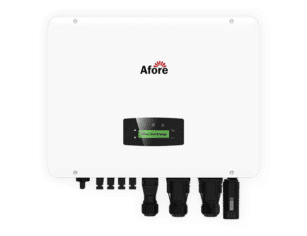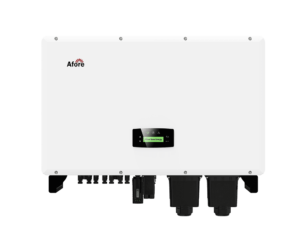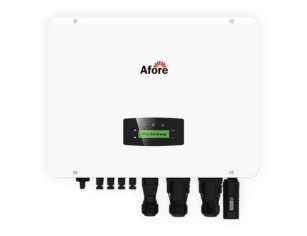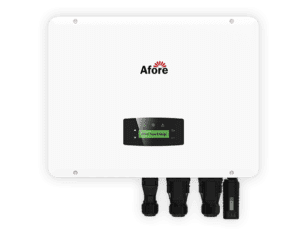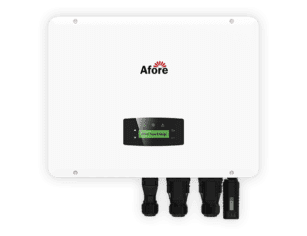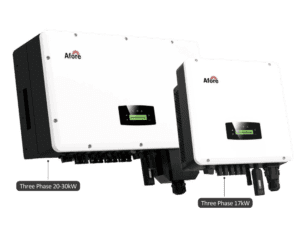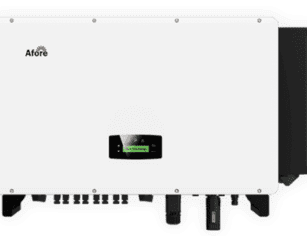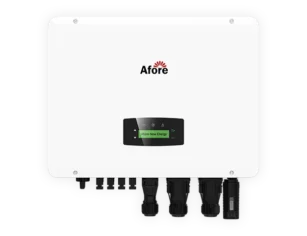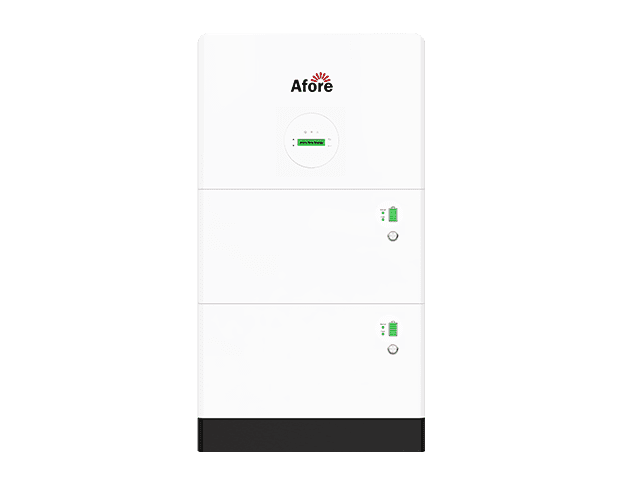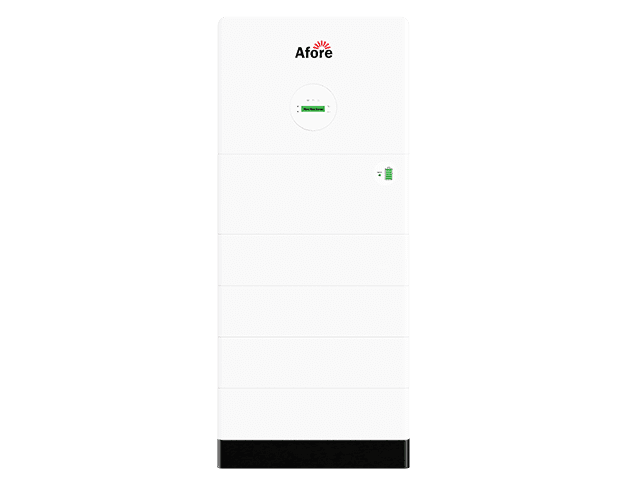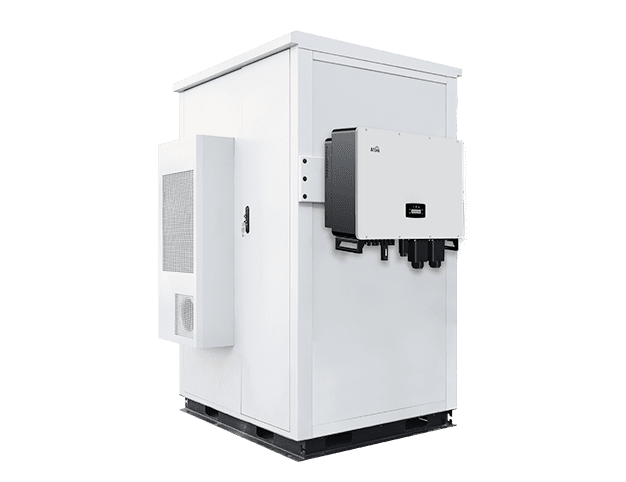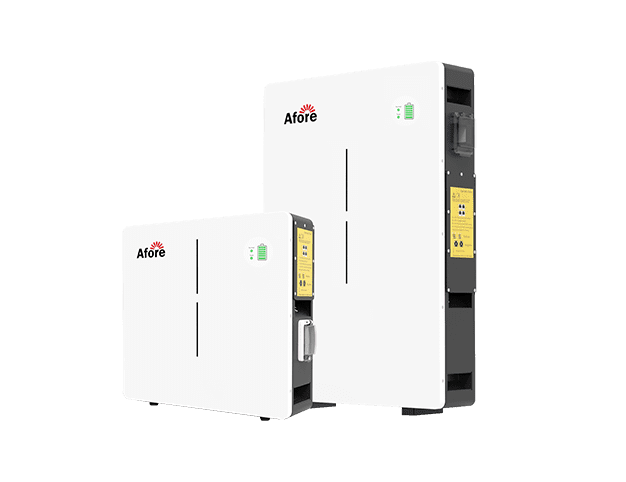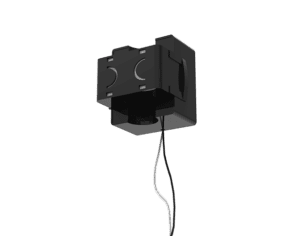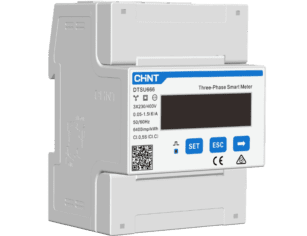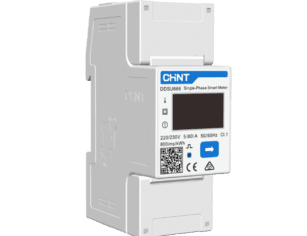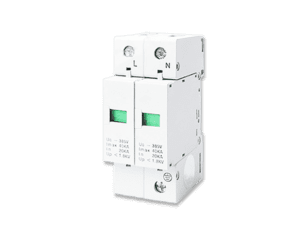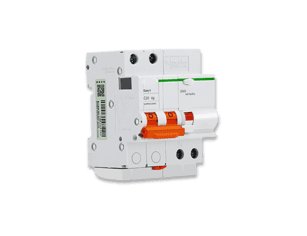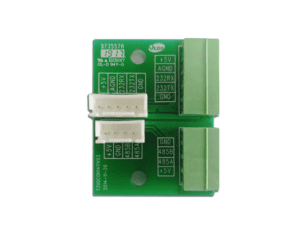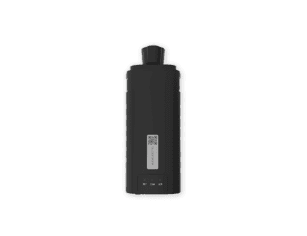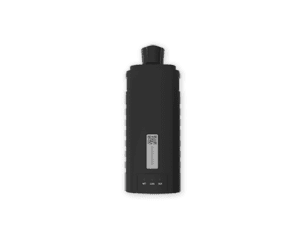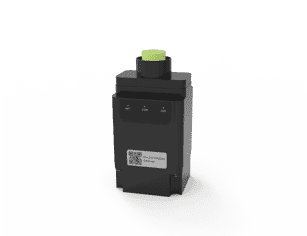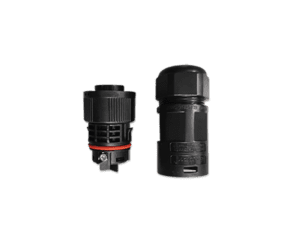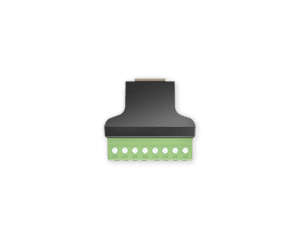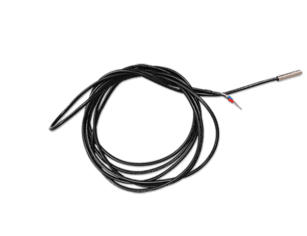Centrale elettrica virtuale: il futuro dell’energia decentralizzata
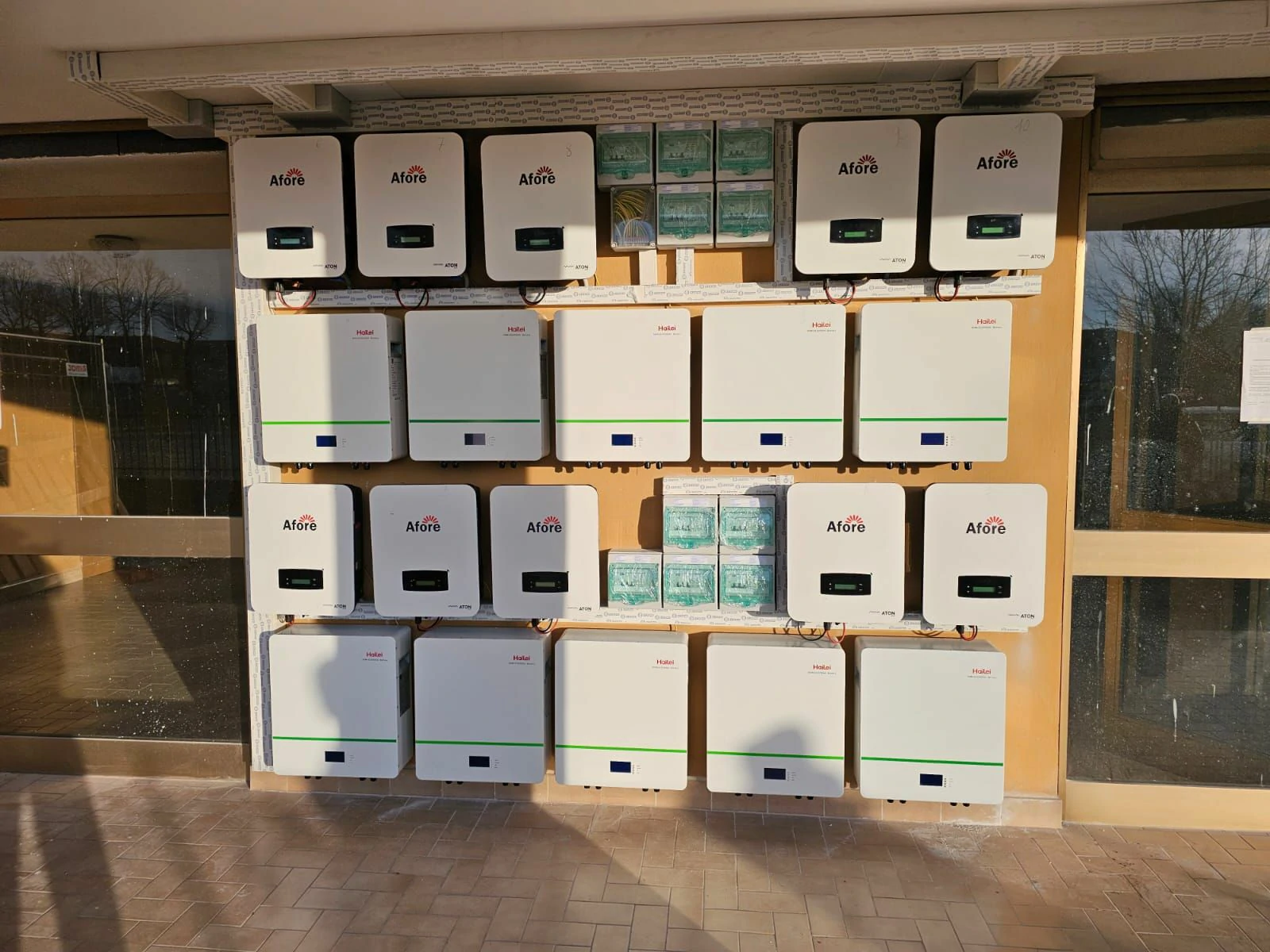
Indice dei contenuti
Nel panorama energetico in rapida evoluzione di oggi, la centrale elettrica virtuale (VPP) sta emergendo come una soluzione rivoluzionaria che combina sostenibilità, tecnologia e resilienza della rete. A differenza delle centrali elettriche tradizionali, una centrale elettrica virtuale collega migliaia di risorse energetiche decentralizzate, come impianti solari sui tetti, batterie domestiche ed elettrodomestici intelligenti, in una rete digitale unificata in grado di produrre, immagazzinare e distribuire elettricità in modo efficiente. Con l’evoluzione della domanda energetica e la tendenza mondiale verso le energie rinnovabili, le VPP si stanno rivelando essenziali per bilanciare l’offerta, ridurre le emissioni e abbassare i costi energetici. Che siate proprietari di una casa con un inverter solare o gestori di servizi pubblici che gestiscono il carico, comprendere il funzionamento di una centrale elettrica virtuale potrebbe portare a reali vantaggi finanziari e ambientali.
Introduzione alle centrali elettriche virtuali
Che cos’è una centrale elettrica virtuale?
Una centrale elettrica virtuale (VPP) non è una struttura fisica che emette fumo nell’atmosfera. Si tratta invece di una rete digitale che aggrega risorse energetiche decentralizzate come pannelli solari sui tetti, batterie domestiche ed elettrodomestici intelligenti. Queste risorse lavorano insieme, coordinate da un software intelligente, per fornire elettricità proprio come una centrale elettrica tradizionale, ma in modo più pulito, efficiente e flessibile.
L’idea è semplice ma rivoluzionaria: una VPP consente alle abitazioni e alle aziende di partecipare all’economia energetica. Invece di essere consumatori passivi, ora contribuiscono attivamente alla rete, grazie al coordinamento in tempo reale della loro produzione e accumulo di energia.
Cosa fa quindi una centrale elettrica virtuale? Bilancia l’offerta e la domanda di energia, riduce il carico durante le ore di punta e rivende alla rete l’energia in eccesso. Non si tratta di un concetto futuristico, ma di una realtà già diffusa in tutto il mondo.
L’evoluzione della tecnologia delle centrali elettriche virtuali
Il concetto di centrale elettrica virtuale è nato dall’urgente necessità di modernizzare le nostre infrastrutture energetiche. Le centrali elettriche tradizionali e centralizzate non sono in grado di adattarsi rapidamente al numero crescente di risorse energetiche distribuite (DER) come l’energia solare ed eolica.
Le prime VPP erano rudimentali e si concentravano principalmente sulla gestione del carico. Oggi, invece, con l’avvento del cloud computing, dell’intelligenza artificiale e dell’IoT, le piattaforme delle centrali elettriche virtuali sono in grado di prendere decisioni complesse in tempo reale. Possono prevedere la domanda di energia, rilevare l’instabilità della rete e reindirizzare l’energia dove è più necessaria.
Queste innovazioni stanno ponendo le basi per un paradigma energetico completamente nuovo, più resiliente, reattivo e radicato nelle energie rinnovabili.
Come funzionano le centrali elettriche virtuali
Componenti chiave di un VPP
Una centrale elettrica virtuale ben funzionante è un ecosistema di tecnologie energetiche che operano in perfetta coordinazione. A differenza di un impianto a fonte singola, una VPP attinge a un pool diversificato di risorse energetiche distribuite (DER), ciascuna delle quali apporta un valore unico alla rete. Questi componenti sono interconnessi attraverso un sistema di controllo digitale, rendendo l’intera rete reattiva, intelligente ed efficiente.
Ecco gli elementi essenziali di una VPP:
- Pannelli solari – Installati sui tetti o su terreni liberi, i pannelli solari sfruttano l’energia del sole e la convertono in elettricità. Nella maggior parte dei VPP, fungono da fonte primaria di generazione.
- Sistemi di accumulo a batteria – Le batterie immagazzinano l’energia solare in eccesso durante il giorno per utilizzarla di notte o nei momenti di picco della domanda. Questa capacità è fondamentale per garantire resilienza e flessibilità energetica.
- Contatori intelligenti e sensori IoT – Questi dispositivi monitorano il consumo e la produzione di energia in tempo reale. La loro comunicazione bidirezionale con il centro di controllo del VPP consente di prendere decisioni in tempo reale.
- Sistemi di gestione energetica domestica (HEMS) – Questi sistemi ottimizzano le modalità e i tempi di consumo energetico degli elettrodomestici, in base ai segnali di prezzo, alla produzione solare o alla domanda della rete.
- Inverter solari – Questi dispositivi fondamentali convertono l’elettricità in corrente continua dei pannelli solari in corrente alternata utilizzabile. Ancora più importante, gli inverter solari intelligenti fungono da interfaccia tra la casa e il VPP, consentendo una comunicazione sicura e una distribuzione coordinata dell’energia.
La vera forza di una centrale elettrica virtuale risiede nell’integrazione di queste parti. Quando sono collegati tramite una sofisticata piattaforma di centrale elettrica virtuale, anche i piccoli sistemi domestici possono rispondere collettivamente alla domanda di energia come un servizio pubblico centralizzato.
Il ruolo degli inverter solari in un VPP
Sebbene possano sembrare solo un altro componente di un impianto solare, gli inverter solari sono fondamentali per la funzionalità e l’intelligenza di una centrale elettrica virtuale. Tradizionalmente, il ruolo di un inverter era semplice: convertire la corrente continua (CC) generata dai pannelli solari in corrente alternata (CA) utilizzata dalle abitazioni e dalla rete elettrica. Ma con l’evoluzione dei sistemi energetici verso una maggiore intelligenza, anche gli inverter si sono evoluti.
In una VPP, l’inverter solare diventa un comunicatore e un controller in tempo reale. Ecco come:
- Flusso di dati bidirezionale: gli inverter moderni dotati di connettività Internet possono inviare dati operativi, quali tensione, frequenza e capacità di uscita, alla piattaforma VPP. Queste informazioni aiutano la piattaforma a decidere quando immagazzinare, esportare o ridurre l’energia.
- Partecipazione ai servizi di rete: gli inverter avanzati supportano funzioni quali il supporto della potenza reattiva, la regolazione della frequenza e la stabilizzazione della tensione. Queste caratteristiche consentono ai piccoli sistemi di contribuire in modo significativo all’affidabilità della rete.
- Distribuzione automatizzata: quando la piattaforma VPP prevede picchi di domanda o prezzi di mercato elevati, può segnalare agli inverter partecipanti di immettere l’energia immagazzinata nella rete, spesso in pochi secondi.
- Conformità e sicurezza: gli inverter integrati nel VPP devono soddisfare gli standard di conformità della rete e garantire una trasmissione dei dati sicura e crittografata, essenziale per mantenere la fiducia e le prestazioni nelle applicazioni rivolte alle utility.
In definitiva, l’inverter solare trasforma un semplice impianto solare sul tetto in una risorsa dinamica e redditizia che opera in armonia con la rete più ampia.
Piattaforme e software VPP
Il cuore digitale di qualsiasi centrale elettrica virtuale è costituito dal suo software di coordinamento: la piattaforma Virtual Power Plant. Questo sistema intelligente basato su cloud è responsabile della trasformazione di risorse energetiche sparse in una rete unificata, reattiva e ottimizzata dal punto di vista finanziario.
La piattaforma Virtual Power Plant svolge diverse funzioni fondamentali:
- Monitoraggio e controllo: monitora continuamente tutte le risorse collegate, compresi i pannelli solari, le batterie e i dispositivi intelligenti, consentendo un controllo e una regolazione istantanei.
- Previsioni e analisi: utilizzando l’intelligenza artificiale e l’apprendimento automatico, la piattaforma analizza i dati meteorologici, i modelli di consumo e le tendenze di mercato per prendere decisioni predittive sulla distribuzione dell’energia.
- Commercio di energia e servizi di rete: la piattaforma consente alle risorse energetiche distribuite aggregate di partecipare ai mercati dell’elettricità. Decide quando immagazzinare energia, quando venderla alla rete e come fornire servizi ausiliari come la risposta alla domanda o lo spostamento del carico.
- Interfacce utente: molte piattaforme includono dashboard per proprietari di case e servizi pubblici, offrendo visibilità in tempo reale su prestazioni, guadagni e impatto ambientale.
Tesla ha dimostrato la potenza e la scalabilità di queste piattaforme con il suo sistema Autobidder. Le loro piattaforme Virtual Power Plant coordinano decine di migliaia di risorse, dagli impianti solari domestici ai generatori industriali, partecipando ai mercati energetici nazionali e stabilizzando i sistemi di alimentazione.
Collegando tutto insieme – inverter intelligenti, generazione solare, accumulo in batterie e analisi dei dati – una piattaforma Virtual Power Plant fa molto di più che orchestrare il flusso di energia. Crea un ecosistema di rete completamente adattivo che avvantaggia tutti i partecipanti, dal singolo proprietario di casa all’intera rete di servizi pubblici.
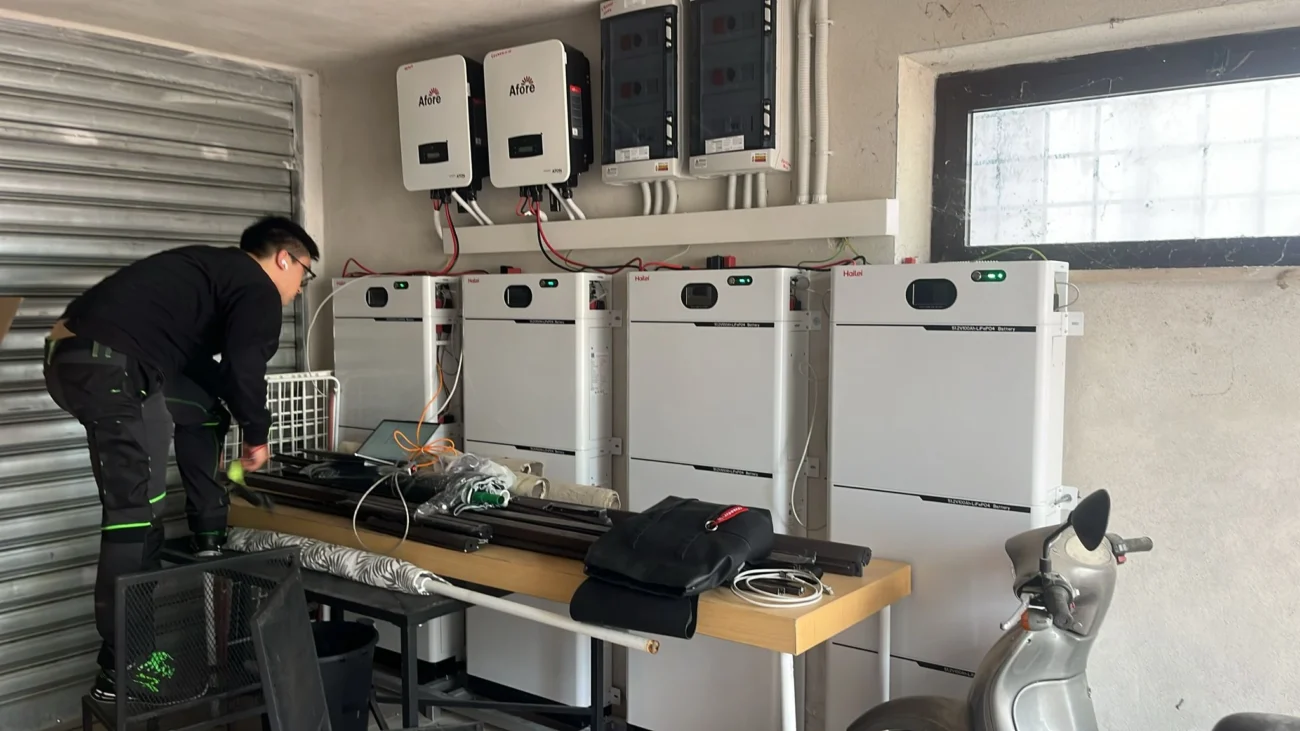
Vantaggi delle centrali elettriche virtuali
L’ascesa delle centrali elettriche virtuali sta ridefinendo il modo in cui generiamo, consumiamo e concepiamo l’elettricità. Collegando innumerevoli piccoli produttori di energia e unità di stoccaggio attraverso una tecnologia intelligente, le VPP offrono vantaggi significativi per tutti, dai consumatori quotidiani alle grandi aziende di servizi pubblici e, soprattutto, all’ambiente. Approfondiamo i vantaggi principali.
Per i consumatori
Se sei proprietario di un’abitazione o di un’azienda dotata di pannelli solari e batterie di accumulo, aderire a una centrale elettrica virtuale può offrirti una serie di vantaggi concreti. Innanzitutto, ti consentirà di risparmiare denaro e ottenere un maggiore valore dai tuoi asset energetici.
- Bollette energetiche più basse: integrando i pannelli solari e la batteria con un VPP, è possibile immagazzinare l’energia in eccesso durante i periodi di sole e utilizzarla durante le ore di picco dei prezzi dell’elettricità. Questo trasferimento intelligente di energia riduce la dipendenza dalla costosa energia della rete, riducendo le bollette mensili.
- Incentivi finanziari: molti programmi VPP offrono pagamenti diretti, crediti in bolletta o premi per la partecipazione. Ad esempio, aziende come Tesla forniscono un compenso monetario quando la batteria contribuisce con l’energia immagazzinata durante i picchi di domanda della rete.
- Energia di riserva e resilienza: in luoghi soggetti a blackout o instabilità della rete, un sistema di batterie collegato a un VPP può fornire energia di riserva fondamentale. Invece di perdere l’elettricità quando la rete va in tilt, il sistema può mantenere in funzione i dispositivi essenziali, offrendo tranquillità.
- Maggiore indipendenza energetica: invece di essere consumatori passivi, i partecipanti al VPP diventano contributori attivi all’economia energetica. Il tuo impianto solare sul tetto e la tua batteria non solo ti fanno risparmiare denaro, ma aiutano anche a stabilizzare la rete e a ridurre la dipendenza dai combustibili fossili.
- Migliori prestazioni del sistema: attraverso una piattaforma Virtual Power Plant, il tuo inverter solare e la tua batteria funzionano in modo più intelligente, ottimizzando automaticamente i flussi di energia in base ai segnali della rete in tempo reale e ai prezzi di mercato, cosa difficile da ottenere individualmente.
Per operatori di rete e servizi pubblici
Dal punto di vista dei gestori di servizi pubblici e delle reti elettriche, le centrali elettriche virtuali sono a dir poco rivoluzionarie. Le reti elettriche tradizionali faticano a far fronte ai picchi di domanda o alle interruzioni impreviste, spesso ricorrendo a costosi e inquinanti impianti di picco. Le VPP offrono una soluzione elegante e sostenibile.
- Stabilità e flessibilità della rete: aggregando migliaia di risorse decentralizzate, le VPP sono in grado di rispondere istantaneamente alle fluttuazioni della domanda o dell’offerta di energia. Questo rapido bilanciamento riduce lo stress sulle infrastrutture e previene i blackout.
- Risparmio sui costi: le VPP riducono la necessità di costruire e gestire costose centrali a combustibili fossili progettate solo per i periodi di picco. Le utility possono invece attingere a una rete distribuita di pannelli solari, batterie e carichi intelligenti, spesso a un costo inferiore.
- Integrazione delle energie rinnovabili: la gestione dell’intermittenza delle energie rinnovabili come il solare e l’eolico è una sfida importante. Le VPP aiutano a smussare queste fluttuazioni coordinando lo stoccaggio e i carichi flessibili, consentendo una maggiore penetrazione dell’energia pulita nella rete.
- Servizi ausiliari: i VPP forniscono servizi essenziali alla rete, come la regolazione della frequenza, il supporto della tensione e la capacità di riserva. Questi servizi erano tradizionalmente forniti da grandi impianti centralizzati, ma sono sempre più spesso erogati da DER coordinati attraverso piattaforme VPP.
- Coinvolgimento dei consumatori: le utility possono offrire ai clienti piani tariffari più innovativi e flessibili, programmi di risposta alla domanda e incentivi, favorendo relazioni più solide e migliorando l’efficienza complessiva della rete.
Per l’ambiente
Forse il vantaggio più interessante delle centrali elettriche virtuali risiede nel loro potenziale di trasformare il panorama energetico verso un futuro più verde e sostenibile.
- Riduzione delle emissioni di carbonio: massimizzando l’uso dell’energia solare e riducendo la dipendenza dalle centrali elettriche a combustibili fossili, le VPP riducono significativamente le emissioni di gas serra.
- Adozione accelerata delle energie rinnovabili: le VPP creano un incentivo economico per i consumatori a installare pannelli solari e batterie, accelerando il passaggio a fonti di energia rinnovabile decentralizzate.
- Riduzione al minimo dello spreco energetico: il coordinamento intelligente della generazione e dello stoccaggio riduce la limitazione energetica (energia solare sprecata) e ottimizza l’efficienza complessiva della rete.
- Minore impatto ambientale: sostituendo le centrali di picco, spesso le centrali elettriche più inquinanti utilizzate solo nelle ore di punta, con DER aggregati, i VPP contribuiscono a ridurre l’inquinamento atmosferico e il consumo di acqua associati alla generazione tradizionale.
- Sostegno agli obiettivi climatici: i governi e le utility di tutto il mondo riconoscono i VPP come un fattore chiave per il raggiungimento di ambiziosi obiettivi di riduzione delle emissioni di carbonio e delle politiche di transizione energetica.
Centrali elettriche virtuali in azione
Le centrali elettriche virtuali non sono solo concetti teorici, ma stanno trasformando attivamente le reti energetiche di tutto il mondo. Sfruttando le risorse energetiche distribuite attraverso tecnologie avanzate, queste VPP forniscono soluzioni concrete a vantaggio dei consumatori, dei servizi pubblici e dell’ambiente. Scopriamo come alcuni dei programmi di maggior successo stanno mettendo in pratica le centrali elettriche virtuali oggi.
Il programma Virtual Power Plant di Tesla
Il programma Virtual Power Plant di Tesla è senza dubbio uno degli esempi più importanti e di maggiore impatto della tecnologia VPP in azione. Partendo dal South Australia e espandendosi poi in California, Tesla ha integrato migliaia di impianti solari domestici dotati di batterie Powerwall e inverter solari intelligenti in una rete energetica unificata.
Questo programma consente alle famiglie partecipanti di condividere l’energia immagazzinata durante i periodi di picco della domanda, riducendo lo stress sulla rete e aumentando l’affidabilità. La piattaforma Virtual Power Plant coordina quando e quanta energia ogni sistema collegato esporta o immagazzina, creando una risorsa energetica sincronizzata e flessibile.
I vantaggi sono significativi:
- Maggiore stabilità della rete: distribuendo l’energia immagazzinata nei momenti di picco della domanda, il VPP di Tesla contribuisce a prevenire i blackout e a livellare le fluttuazioni della rete.
- Recupero più rapido in caso di interruzioni: in caso di interruzioni, le abitazioni collegate al VPP possono ripristinare l’alimentazione più rapidamente grazie alle riserve energetiche coordinate.
- Incentivi finanziari: i partecipanti ricevono un compenso o crediti in bolletta per il loro contributo, trasformando i loro sistemi energetici domestici in risorse che generano reddito.
Il VPP di Tesla nel South Australia è spesso citato come il più grande VPP residenziale al mondo, dimostrando come una rete decentralizzata su larga scala possa competere con le centrali elettriche tradizionali in termini di capacità e reattività. Programmi simili in California, in collaborazione con aziende di servizi pubblici come PG&E, dimostrano ulteriormente come i VPP possano integrarsi perfettamente nei mercati energetici esistenti.
Questa implementazione nel mondo reale sottolinea il potere della combinazione di inverter solari intelligenti, batterie domestiche e piattaforme software avanzate per creare reti energetiche resilienti e pulite.
Esempi globali e casi d’uso
Oltre ai progetti pionieristici di Tesla, le centrali elettriche virtuali stanno guadagnando terreno in tutto il mondo, adattandosi ai vari mercati e alle diverse esigenze energetiche.
- Progetti pilota VPP in Australia: l’Australia è diventata un terreno fertile per l’innovazione nel campo delle VPP, grazie agli elevati tassi di adozione dell’energia solare e alle politiche governative di sostegno. Vari programmi pilota dimostrano come le VPP contribuiscano a ridurre i picchi di domanda, abbassare i costi energetici e fornire supporto alla rete sia nelle comunità urbane che in quelle remote.
- Iniziative delle utility statunitensi: diverse utility americane stanno esplorando le VPP per modernizzare le infrastrutture obsolete e gestire la domanda in aumento. Iscrivendo i clienti residenziali e commerciali con sistemi solari e batterie a programmi coordinati, queste utility mirano a rinviare costosi aggiornamenti della rete e a migliorare la resilienza del sistema.
- Asia e mercati emergenti: i paesi con settori rinnovabili in rapida crescita stanno iniziando a sperimentare modelli VPP. Questi progetti si concentrano spesso sull’integrazione di inverter solari e sistemi di batterie nelle reti regionali per ottimizzare l’uso dell’energia e sostenere gli obiettivi di elettrificazione.
In tutti questi esempi, il filo conduttore è l’affidamento a piattaforme intelligenti di Virtual Power Plant che aggregano i dati provenienti da risorse distribuite e prendono decisioni ottimizzate e automatizzate per bilanciare domanda e offerta.
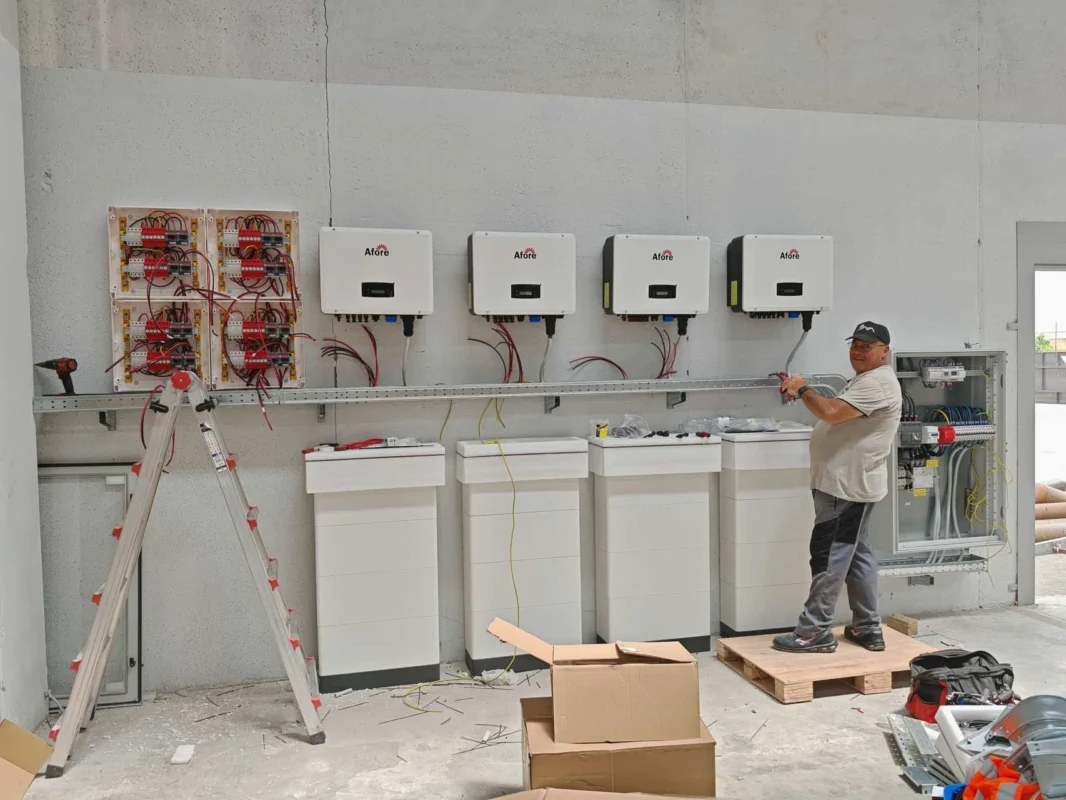
Impatto economico e considerazioni finanziarie
Come guadagnano le centrali elettriche virtuali
Le centrali elettriche virtuali generano ricavi in diversi modi:
- Arbitraggio energetico: acquistare energia quando è economica (o immagazzinarla tramite energia solare) e venderla quando i prezzi salgono.
- Servizi di rete: fornire regolazione della frequenza e supporto di tensione.
- Risposta alla domanda: ridurre il carico durante i periodi di picco della domanda, ottenendo ricompense dalle utility.
Tutte queste funzioni sono automatizzate dalla piattaforma della centrale elettrica virtuale, che ottimizza la redditività.y.
Quanto paga una centrale elettrica virtuale?
Il guadagno varia notevolmente. Alcuni utenti guadagnano poche centinaia di dollari all’anno, mentre altri superano i 1.000 dollari, a seconda delle dimensioni dell’impianto, del tasso di partecipazione e degli incentivi locali.
Ad esempio, Tesla offre crediti in base alla quantità di energia che il vostro impianto contribuisce durante i picchi di domanda. Questi pagamenti, sebbene non sufficienti per andare in pensione, compensano in modo significativo il costo degli investimenti in batterie e inverter solari.
Vale la pena investire in una centrale elettrica virtuale?
Se disponete già di un impianto solare e di un sistema di accumulo, aderire a una centrale elettrica virtuale è spesso una scelta ovvia. Aumenta il valore del vostro impianto e può accelerare il ritorno sull’investimento.
Per chi sta valutando l’adozione di un impianto solare, la possibilità di aderire a una VPP potrebbe essere determinante. Non solo risparmierete sulle bollette energetiche, ma sarete anche ricompensati per aver aiutato la rete.
Con la crescita e la maturazione dei programmi VPP, ci si aspetta che i vantaggi finanziari diventino ancora più interessanti.
Sfide e svantaggi
Sebbene le centrali elettriche virtuali offrano interessanti opportunità per un futuro energetico più pulito e intelligente, non sono prive di sfide. Comprendere questi limiti è fondamentale per i consumatori, i servizi pubblici e i responsabili politici per prendere decisioni informate e promuovere una più ampia adozione. Esploriamo oggi i principali svantaggi e ostacoli alla partecipazione alle centrali elettriche virtuali.
Quali sono gli svantaggi di una centrale elettrica virtuale?
Nonostante la loro crescente popolarità, le centrali elettriche virtuali presentano alcuni svantaggi intrinseci:
- Costi iniziali elevati: uno dei maggiori ostacoli per i consumatori è l’investimento iniziale richiesto per i pannelli solari, le batterie e gli inverter solari compatibili. Sebbene i prezzi siano diminuiti in modo significativo nel corso degli anni, l’installazione di questi sistemi richiede ancora un capitale considerevole. Per molte famiglie, questa spesa iniziale può essere un fattore determinante, anche se esistono risparmi e incentivi a lungo termine.
- Incertezza normativa e di mercato: il panorama normativo per i VPP varia notevolmente da una regione all’altra ed è spesso ancora in evoluzione. Le norme che regolano la partecipazione delle risorse energetiche aggregate ai mercati all’ingrosso o la fornitura di servizi di rete possono essere complesse o poco chiare. Questa incertezza normativa può limitare la disponibilità dei programmi e scoraggiare gli investimenti.
- Complessità tecnica: l’installazione e la manutenzione di un sistema compatibile con i VPP richiedono alcune conoscenze tecniche. I proprietari di immobili possono trovarsi in difficoltà nel gestire la compatibilità dei sistemi, le piattaforme software e i requisiti di comunicazione. Anche la necessità di una connessione Internet affidabile e di piattaforme avanzate per le centrali elettriche virtuali può rappresentare un ostacolo.
- Preoccupazioni relative alla privacy e alla sicurezza dei dati: partecipare a un programma VPP significa condividere dati in tempo reale sul consumo, la produzione e lo stoccaggio di energia. Per alcuni consumatori, ciò solleva preoccupazioni relative alla privacy dei dati e ai rischi per la sicurezza informatica. Garantire che le piattaforme proteggano i dati degli utenti è fondamentale per instaurare un rapporto di fiducia.
- Disponibilità e idoneità limitate: non tutte le abitazioni sono adatte alla partecipazione a un VPP. Fattori quali la posizione geografica, l’orientamento del tetto, l’ombreggiamento e le politiche locali in materia di servizi pubblici possono escludere alcuni potenziali partecipanti. Ciò limita la portata dei vantaggi del VPP, soprattutto nelle zone meno soleggiate o rurali.
Nel complesso, mentre la tecnologia e i modelli di business alla base delle centrali elettriche virtuali continuano a maturare, questi svantaggi evidenziano le aree in cui sono ancora necessari miglioramenti e innovazioni.
Ostacoli alla partecipazione dei consumatori
Coinvolgere i consumatori nelle centrali elettriche virtuali può essere difficile e diversi ostacoli ne limitano la diffusione su larga scala:
- Consapevolezza e comprensione: molti proprietari di immobili semplicemente non hanno familiarità con i concetti delle VPP o con i vantaggi di aderirvi. Senza informazioni chiare e accessibili, è difficile per i consumatori comprenderne il valore o sapere come partecipare.
- Processi di registrazione complessi: alcuni programmi VPP hanno procedure di registrazione complicate o richiedono valutazioni tecniche, che possono scoraggiare gli utenti interessati.
- Limiti infrastrutturali: una connessione Internet affidabile è essenziale per la comunicazione VPP e la gestione dell’energia in tempo reale. Le abitazioni con una connessione Internet scadente o instabile potrebbero non essere idonee o avere prestazioni non ottimali.
- Disallineamento degli incentivi: se gli incentivi finanziari sono troppo bassi o poco chiari, i consumatori potrebbero non sentirsi motivati a investire nell’hardware necessario o a partecipare attivamente.
- Problemi di fiducia e controllo: alcuni utenti temono di perdere il controllo sui propri sistemi energetici o temono costi imprevisti o una riduzione dell’autonomia quando integrati in un VPP.
Per superare questi ostacoli è necessaria una combinazione di formazione, tecnologia semplificata, politiche trasparenti e modelli finanziari attraenti. Con l’evoluzione del settore, semplificare la partecipazionepation and improving consumer confidence will be key drivers for the growth of Virtual Power Plants.
Prospettive future per le centrali elettriche virtuali
Innovazione e tecnologie emergenti
Il VPP del futuro sarà ancora più intelligente, grazie a progressi quali:
- Intelligenza artificiale e apprendimento automatico: per una gestione energetica predittiva.
- Blockchain: per consentire lo scambio di energia peer-to-peer.
- Vehicle-to-grid (V2G): dove le auto elettriche fungono da batterie mobili.
Queste innovazioni miglioreranno le capacità e la redditività delle piattaforme Virtual Power Plant.
Sviluppi normativi e politici
I governi di tutto il mondo stanno iniziando a riconoscere il valore dei VPP. Stanno emergendo nuove politiche a sostegno di:
- Sovvenzioni per l’energia solare e lo stoccaggio
- Standardizzazione dei dati tra le utility
- Partecipazione flessibile al mercato energetico
Man mano che le normative si adeguano alla tecnologia, è prevedibile una crescita esplosiva nel settore dei VPP.
Conclusione
Le centrali elettriche virtuali stanno trasformando il panorama energetico consentendo ai proprietari di immobili e alle aziende di partecipare attivamente alla produzione di energia pulita e alla gestione della rete. Grazie ai progressi compiuti nel campo degli inverter solari e delle piattaforme intelligenti per centrali elettriche virtuali, le barriere all’ingresso stanno cadendo, rendendo più facile che mai sfruttare il potere delle energie rinnovabili.
Per chiunque sia interessato a massimizzare l’efficienza del proprio impianto solare e a integrarlo senza problemi in un VPP, è fondamentale scegliere un inverter solare di alta qualità prodotto da un’azienda affidabile. Gli inverter affidabili non solo convertono l’energia in modo efficace, ma consentono anche la comunicazione con le piattaforme VPP, aprendo nuove opportunità per risparmiare denaro e sostenere la stabilità della rete.
Che tu sia un proprietario di casa che desidera ridurre le bollette energetiche o un’azienda di servizi pubblici che punta a un’energia più pulita, le centrali elettriche virtuali offrono una soluzione interessante per il futuro. Il futuro dell’energia è decentralizzato, sostenibile e già a portata di mano.
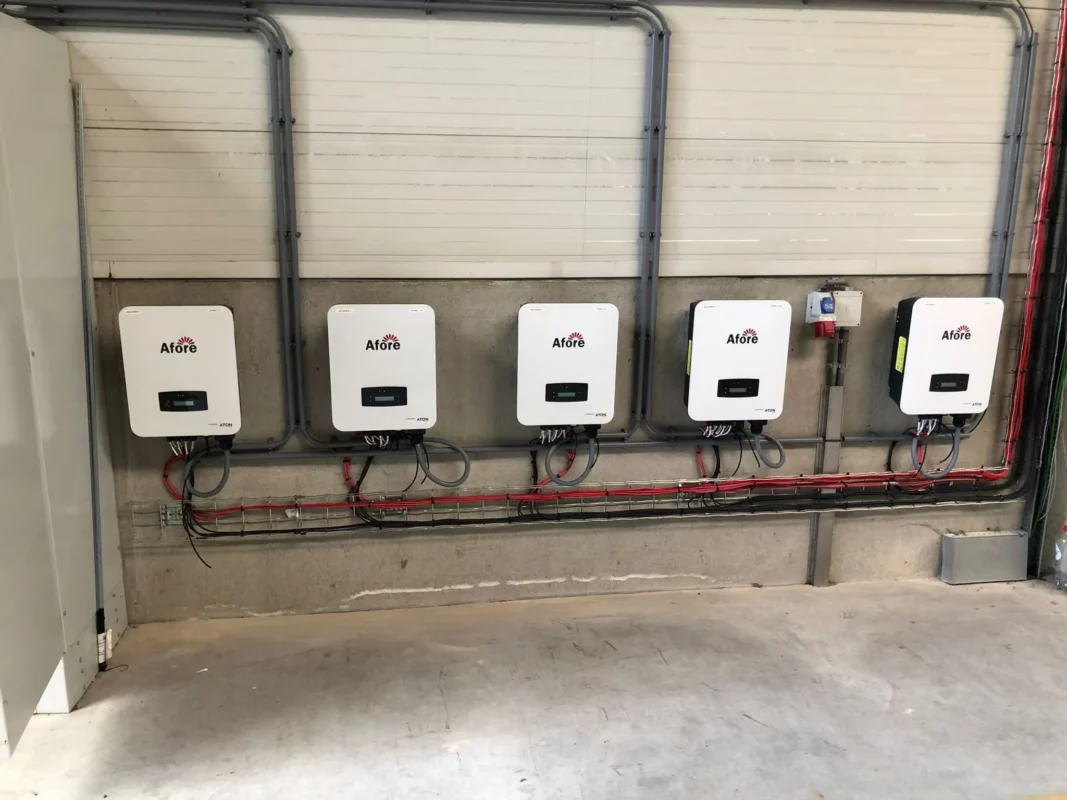
Domande frequenti
1. Cos’è una centrale elettrica virtuale?
Una centrale elettrica virtuale (VPP) è una sofisticata rete digitale che aggrega una varietà di risorse energetiche decentralizzate, come pannelli solari sui tetti, sistemi di accumulo a batteria ed elettrodomestici intelligenti, in un’unica entità coordinata. Anziché affidarsi a una centrale elettrica tradizionale centralizzata, una VPP utilizza un software avanzato per gestire e ottimizzare in tempo reale queste risorse energetiche distribuite, funzionando efficacemente come una centrale elettrica su larga scala. Questo coordinamento aiuta a bilanciare l’offerta e la domanda di energia, sostiene la stabilità della rete e consente ai partecipanti di rivendere l’energia in eccesso alla rete.
2. Vale la pena investire in una centrale elettrica virtuale?
Sì, aderire a una centrale elettrica virtuale può essere molto vantaggioso, soprattutto se si possiedono già pannelli solari e batterie di accumulo. Partecipando, i proprietari di immobili possono ridurre le bollette energetiche, ricevere incentivi finanziari o pagamenti dalle aziende di servizi pubblici e aumentare la propria indipendenza energetica. Inoltre, le VPP contribuiscono a una rete energetica più sostenibile massimizzando l’uso di energia rinnovabile. Tuttavia, il valore dipende dalla disponibilità del programma locale, dalle dimensioni del sistema e dagli incentivi. Con la maturazione della tecnologia e dei mercati delle VPP, i vantaggi non potranno che aumentare.
3. Quali sono gli svantaggi di una centrale elettrica virtuale?
Sebbene le centrali elettriche virtuali offrano molti vantaggi, presentano anche alcuni svantaggi. Il costo iniziale dei pannelli solari, delle batterie e degli inverter solari compatibili può essere significativo, rendendoli meno accessibili per alcuni. Le incertezze normative e l’evoluzione delle politiche possono influire sulla partecipazione. Vi è anche la complessità tecnica dell’integrazione del proprio sistema con una VPP e le preoccupazioni relative alla privacy dei dati dovute alla condivisione di informazioni in tempo reale. Infine, non tutte le località o le abitazioni sono idonee a partecipare a causa di restrizioni infrastrutturali o di servizi pubblici.
4. Quanto paga una centrale elettrica virtuale?
I pagamenti da parte delle centrali elettriche virtuali variano notevolmente a seconda delle dimensioni dell’impianto, della capacità della batteria e degli incentivi locali. Alcuni partecipanti guadagnano poche centinaia di dollari all’anno, mentre altri con impianti più grandi o in aree con programmi più consistenti possono guadagnare oltre 1.000 dollari all’anno. Ad esempio, i programmi VPP di Tesla offrono crediti in bolletta o pagamenti basati sulle prestazioni a seconda della quantità di energia esportata o della frequenza con cui il sistema contribuisce a ridurre la domanda di rete durante le ore di punta.
5. Come guadagnano le centrali elettriche virtuali?
Le centrali elettriche virtuali generano ricavi ottimizzando i tempi di acquisto, stoccaggio e vendita dell’energia elettrica. Esse effettuano operazioni di arbitraggio energetico acquistando o immagazzinando energia quando i prezzi sono bassi e vendendola quando la domanda aumenta. Le VPP forniscono anche preziosi servizi di rete quali la regolazione della frequenza, il supporto della tensione e la risposta alla domanda, contribuendo a stabilizzare la rete elettrica. Questi servizi di rete sono spesso compensati dalle utility o dai mercati energetici, consentendo agli operatori delle VPP di ottenere un reddito che può essere condiviso con i partecipanti.
6. Cosa fa una centrale elettrica virtuale?
Una centrale elettrica virtuale coordina una rete di sistemi energetici decentralizzati, tra cui pannelli solari, batterie e dispositivi intelligenti, per produrre, immagazzinare e distribuire collettivamente l’elettricità. Bilancia la rete facendo corrispondere domanda e offerta, riducendo la necessità di centrali elettriche a combustibili fossili durante i periodi di picco. Le VPP migliorano l’affidabilità della rete, riducono i costi energetici e accelerano l’integrazione delle fonti di energia rinnovabile, sostenendo in ultima analisi un futuro energetico più pulito e intelligente.




